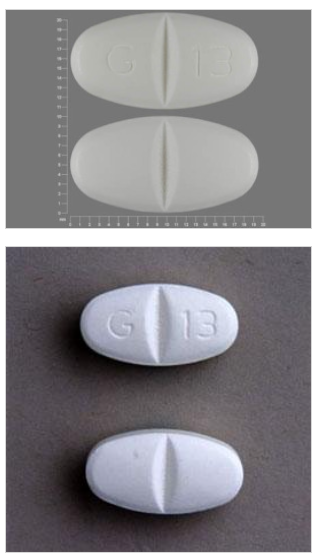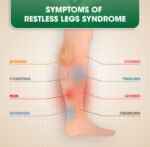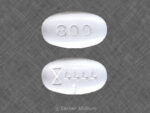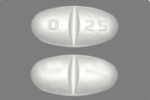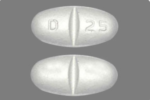Usual Adult Dose of Gabapentin for Epilepsy:
Initial dose: 300 mg orally on day one, 300 mg orally twice a day on day two, then 300 mg orally 3 times a day on day three.
Maintenance dose: 900 to 1800 mg orally in 3 divided doses. If necessary, the dose may be increased using 300 mg or 400 mg capsules three times a day up to 1800 mg/day. Dosages up to 2400 mg/day have been well tolerated in long-term clinical studies. Doses of 3600 mg/day have also been administered to a small number of patients for a relatively short duration, and have been well tolerated. The maximum time between doses in the three times a day schedule should not exceed 12 hours.
The safety and effectiveness of gabapentin available under the trade name Gralise (R) or Horizant (R) in patients with epilepsy has not been studied.
Usual Adult Dose for Postherpetic Neuralgia:
Initial dose: 300 mg orally on day one, 300 mg orally twice a day on day two, then 300 mg orally 3 times a day on day three.
The dose may be titrated up as needed for pain relief to a daily dose of 1800 mg.
Maintenance dose: 900 to 1800 mg orally in 3 divided doses.
Efficacy was demonstrated in clinical studies over a range of 1800 mg/day to 3600 mg/day. However, no additional benefit was demonstrated from the use of doses over 1800 mg/day.
Gabapentin available under the trade name Gralise (R):
Maintenance dose: Gralise (R) should be titrated to 1800 mg orally once daily with the evening meal.
Recommended titration schedule:
- Day 1: 300 mg orally with the evening meal
- Day 2: 600 mg orally with the evening meal
- Days 3 through 6: 900 mg orally with the evening meal
- Days 7 through 10: 1200 mg orally with the evening meal
- Days 11 through 14: 1500 mg orally with the evening meal
- Day 15: 1800 mg orally with the evening meal
Gralise (R) is not interchangeable with other gabapentin products because of differing pharmacokinetic profiles that affect the frequency of administration.
Gabapentin enacarbil extended release tablets available under the trade name Horizant (R):
The recommended dosage is 600 mg orally twice daily. Therapy should be initiated at a dose of 600 mg orally in the morning for 3 days of therapy, then increased to 600 mg twice daily (1,200 mg/day) on day four.
Gabapentin enacarbil extended release tablets available under the trade name Horizant (R) and gabapentin are not interchangeable.
Usual Adult Dose for Restless Legs Syndrome:
Gabapentin enacarbil available under the trade name Horizant (R):
600 mg orally once daily with food at about 5 PM
Usual Pediatric Dose for Epilepsy:
Less than 3 years: Effectiveness has not been established.
Greater than or equal to 3 and less than 12 years:
Starting Dose: ranges from 10 to 15 mg/kg/day in 3 divided doses.
Effective Dose: reached by upward titration over a period of approximately 3 days. The effective dose of gabapentin in patients 5 years of age and older is 25 to 35 mg/kg/day and given in divided doses (three times a day). The effective dose in pediatric patients ages 3 and 4 years is 40 mg/kg/day and given in divided doses (three times a day). Gabapentin may be administered as the oral solution, capsule, or tablet, or using combinations of these formulations. Dosages up to 50 mg/kg/day have been well tolerated in a long term clinical study. The maximum time interval between doses should not exceed 12 hours.
Greater than 2 years:
Initial dose: 300 mg orally on day one, 300 mg orally twice a day on day two, then 300 mg orally 3 times a day on day three.
Maintenance dose: 900 to 1800 mg orally in 3 divided doses. If necessary, the dose may be increased using 300 mg or 400 mg capsules three times a day up to 1800 mg/day. Dosages up to 2400 mg/day have been well tolerated in long term clinical studies. Doses of 3600 mg/day have also been administered to a small number of patients for a relatively short duration, and have been well tolerated. The maximum time between doses in the three times a day schedule should not exceed 12 hours.
The amount of medicine that you take depends on the strength of the medicine. Also, the number of doses you take each day, the time allowed between doses, and the length of time you take the medicine depend on the medical problem for which you are using the medicine.
- For oral dosage forms (capsules, liquid, and tablets):
- For epilepsy:
- Adults and teenagers 12 years of age and older—At first, 300 milligrams (mg) 3 times per day. Your doctor may adjust your dose as needed. However, the dose is usually not more than 1800 mg per day.
- Children 3 to 12 years of age—Dose is based on body weight and must be determined by your doctor. The starting dose is 10 to 15 milligrams (mg) per kilogram (kg) of body weight per day and divided in 3 doses. Your doctor may adjust your dose as needed.
- Children younger than 3 years of age—Use and dose must be determined by your doctor.
- For postherpetic neuralgia:
- Adults— At first, 300 milligrams (mg) as a single dose in the evening. Your doctor may adjust your dose as needed. However, the dose is usually not more than 1800 mg per day.
- Children—Use and dose must be determined by your doctor.
- For epilepsy:
- For oral dosage form (extended-release tablets):
- For postherpetic neuralgia:
- Adults— At first, 600 milligrams (mg) in the morning. Then, your doctor will increase your dose to 600 mg 2 times per day.
- Children—Use and dose must be determined by your doctor.
- For restless legs syndrome:
- Adults—600 milligrams (mg) as a single dose at about 5 PM.
- Children—Use and dose must be determined by your doctor.
- For postherpetic neuralgia:
Missed Dose
If you miss a dose of this medicine, take it as soon as possible. However, if it is almost time for your next dose, skip the missed dose and go back to your regular dosing schedule. Do not double doses.
Horizant® extended-release tablets: If you miss a dose of this medicine, skip the missed dose and go back to your regular dosing schedule.
Gabapentin dosage FAQs
How long does it take gabapentin to work?
The starting dose of gabapentin is low. The dose amount and frequency will be steadily increased each day until an effective dose is reached, a process called titration. For most conditions, it typically takes one to two weeks after the starting dose to notice the effects of gabapentin.
How long does gabapentin stay in your system?
For people with healthy kidneys, gabapentin is typically taken every eight hours. Each dose reaches its maximum concentration in the body in two to three hours.
The kidneys rapidly clear gabapentin from the body. The rate at which the body clears gabapentin is measured by its half-life, which is the amount of time it takes for the body to clear half the gabapentin in the body. The half-life of gabapentin in children is about five hours. In adults, gabapentin’s half-life is five to seven hours.
Because gabapentin is cleared by the kidneys, the drug stays in the system longer in patients with impaired renal function. Both the dose amount and dose frequency may need to be adjusted by the prescribing physician.
What happens if I miss a dose of gabapentin?
If you miss a dose of gabapentin, take the missed dose as soon as you remember. Take the next dose at its scheduled time. If it is almost time for the next dose, skip the missed dose and take the next dose at its scheduled time. Do not take extra medicine to make up for a missed dose. If you are taking gabapentin for seizures, ask your doctor, pharmacist, or other healthcare professional for instructions for handling a missed dose. In patients with epilepsy, missing a dose for longer than 12 hours increases the risk of seizures.
How do I stop taking gabapentin?
Gabapentin should not be stopped unless directed by a physician. Patients may experience withdrawal symptoms, such as agitation, anxiety, restlessness, nausea, and flu-like symptoms, if gabapentin is abruptly discontinued after taking it for longer than six weeks. If gabapentin is being taken to prevent seizures, abrupt discontinuation of the drug may cause severe seizures. When it’s time to stop taking gabapentin, your doctor may gradually taper your dose across seven days.
Seek immediate medical attention if you experience serious side effects such as mood or behavioral changes, suicidal thoughts, breathing problems, or signs of a hypersensitivity reaction such as hives, difficulty breathing, swollen glands, or fever.
What can be used instead of gabapentin?
Because of side effects, medical conditions, or other reasons, gabapentin may not be right for everyone. The good news is that there are alternative and effective medications for most conditions treated by gabapentin. These medications include anticonvulsants, analgesics, tricyclic antidepressants, selective serotonin reuptake inhibitors (SSRIs) such as Cymbalta (duloxetine), and selective serotonin and norepinephrine reuptake inhibitors (SNRIs) such as Savella (milnacipran).
What is the maximum dosage for gabapentin?
The maximum dosage for gabapentin depends on the condition being treated. For most conditions, this maximum ranges between 2,400 mg and 3,600 mg per day.
What interacts with gabapentin?
Foods do not affect the bioavailability or effectiveness of gabapentin. However, if gabapentin is causing side effects such as upset stomach, constipation, or diarrhea, changes in the diet may be required.
Because gabapentin slows activity in the brain, it may cause certain side effects, such as drowsiness, dizziness, sedation, somnolence, and impaired coordination (ataxia). Gabapentin may interact with similar substances or drugs that depress the central nervous system, such as alcohol, cannabinoids, sedatives, antihistamines, anxiety medications, opioids, and other antiepileptic drugs. Not all of these drugs are to be avoided outright, but their use may be modified by your physician. When gabapentin is taken with any of these drugs, patients need to avoid the medication or be cautious while driving, operating machinery, or engaging in potentially dangerous activities.
Patients should also exercise caution when taking antacids that contain aluminum or magnesium salts. Aluminum and magnesium can decrease the concentration of gabapentin in the body, which can reduce the effectiveness of the medication. As a general rule, wait at least two hours after taking an antacid before taking a dose of gabapentin.
Pain Medications, Pain Relief, and Pain Management

